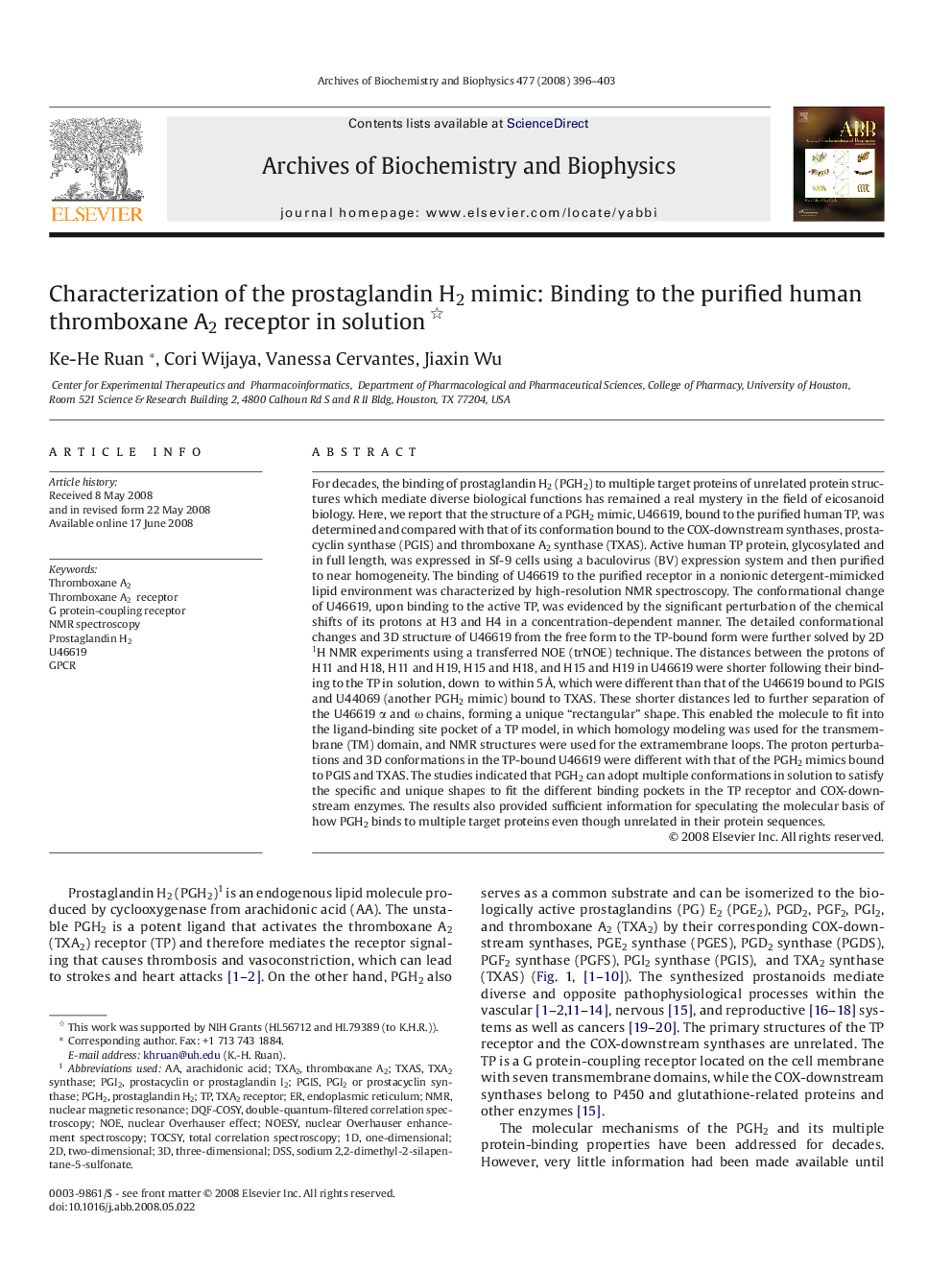| Article ID | Journal | Published Year | Pages | File Type |
|---|---|---|---|---|
| 1926604 | Archives of Biochemistry and Biophysics | 2008 | 8 Pages |
For decades, the binding of prostaglandin H2 (PGH2) to multiple target proteins of unrelated protein structures which mediate diverse biological functions has remained a real mystery in the field of eicosanoid biology. Here, we report that the structure of a PGH2 mimic, U46619, bound to the purified human TP, was determined and compared with that of its conformation bound to the COX-downstream synthases, prostacyclin synthase (PGIS) and thromboxane A2 synthase (TXAS). Active human TP protein, glycosylated and in full length, was expressed in Sf-9 cells using a baculovirus (BV) expression system and then purified to near homogeneity. The binding of U46619 to the purified receptor in a nonionic detergent-mimicked lipid environment was characterized by high-resolution NMR spectroscopy. The conformational change of U46619, upon binding to the active TP, was evidenced by the significant perturbation of the chemical shifts of its protons at H3 and H4 in a concentration-dependent manner. The detailed conformational changes and 3D structure of U46619 from the free form to the TP-bound form were further solved by 2D 1H NMR experiments using a transferred NOE (trNOE) technique. The distances between the protons of H11 and H18, H11 and H19, H15 and H18, and H15 and H19 in U46619 were shorter following their binding to the TP in solution, down to within 5 Å, which were different than that of the U46619 bound to PGIS and U44069 (another PGH2 mimic) bound to TXAS. These shorter distances led to further separation of the U46619 α and ω chains, forming a unique “rectangular” shape. This enabled the molecule to fit into the ligand-binding site pocket of a TP model, in which homology modeling was used for the transmembrane (TM) domain, and NMR structures were used for the extramembrane loops. The proton perturbations and 3D conformations in the TP-bound U46619 were different with that of the PGH2 mimics bound to PGIS and TXAS. The studies indicated that PGH2 can adopt multiple conformations in solution to satisfy the specific and unique shapes to fit the different binding pockets in the TP receptor and COX-downstream enzymes. The results also provided sufficient information for speculating the molecular basis of how PGH2 binds to multiple target proteins even though unrelated in their protein sequences.
